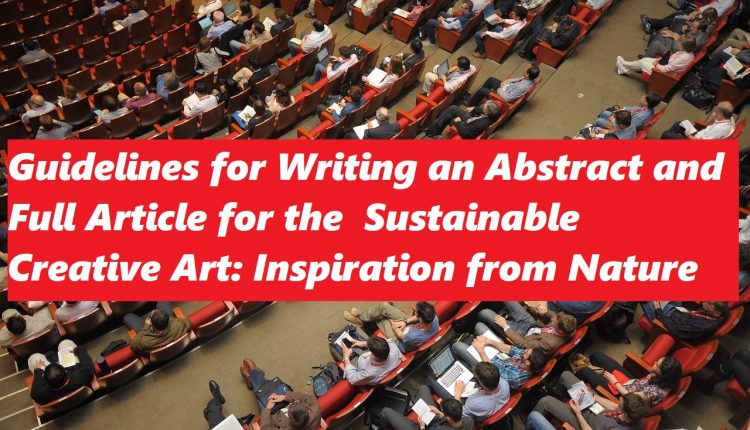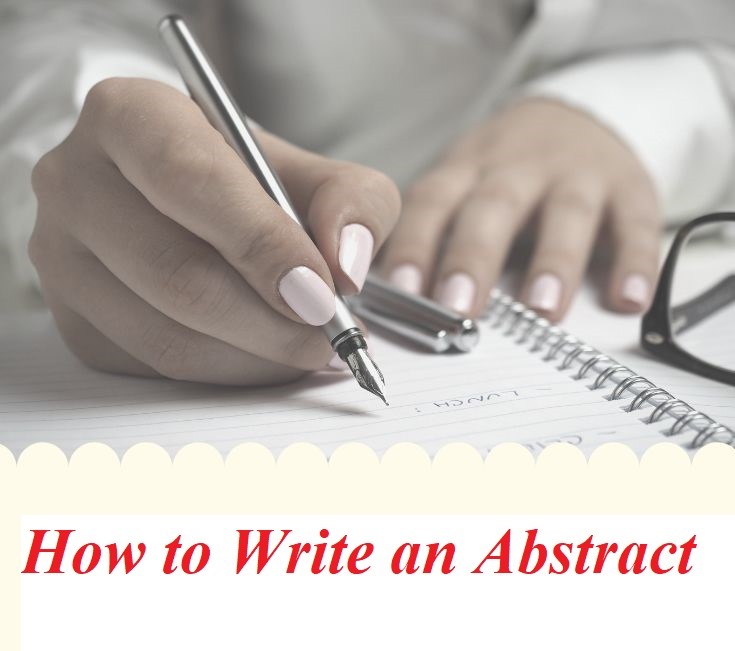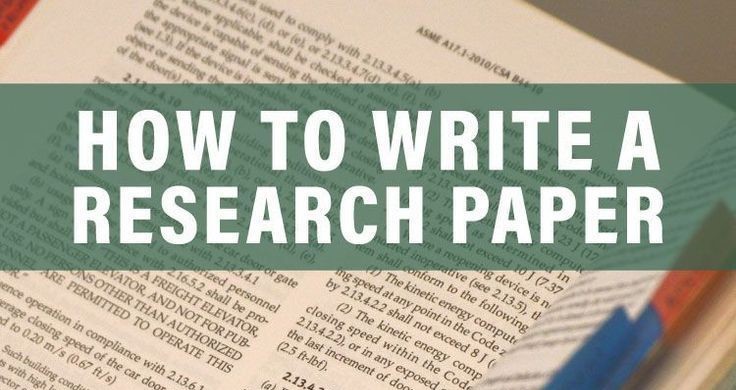Guidelines for Writing an Abstract and Full Article for The Sustainable Creative Art Conference
These guidelines are intended to assist researchers and creative professionals in the fields of fashion, arts, and design in preparing their abstracts and manuscripts for submission to the “Sustainable Creative Art: Inspiration from Nature (SCIN)” conference. The guide outlines a clear, step-by-step process for developing both the abstract and full article, ensuring clarity and adherence to academic standards.
-
Writing an Abstract
The abstract serves as a concise summary of your research or creative work. It provides potential readers and reviewers with a clear understanding of your study’s objectives, methods, results, and conclusions.
Key Elements to Include
- Purpose: Clearly state the aim of your research or creative project. What inspired the work, and what problem or issue does it address? For example, if your work centers around sustainable fashion, articulate the environmental challenges you aim to tackle.
- Methods: Describe the approach or techniques employed in your work. If it involves design, highlight the materials, processes, or methodologies that align with sustainability practices.
- Results: Summarize the key outcomes or findings of your work. These could include completed designs, innovative artistic techniques, or contributions to eco-friendly practices.
- Conclusion: Explain the broader implications of your work. For example, how does it contribute to sustainability in creative industries?
Format and Submission
- Length: The abstract should range between 150-300 words.
- Clarity and Precision: Ensure that your abstract is clear, precise, and avoids unnecessary complexity. It should provide a comprehensive overview without delving too deeply into details.
- Keywords: Include 3-5 keywords that best capture the core themes of your work, such as “sustainable materials,” “eco-friendly design,” or “nature-inspired fashion.”
- Submission Process: Once your abstract is ready, submit it via the conference website by registering, selecting the appropriate topic, and uploading your abstract. Be sure to include your title, abstract text, keywords, and author details.
-
Writing the Full Article
After your abstract is accepted, moreover, you can proceed to submit a full article that provides a more in-depth examination of your research or creative project. The full article should be structured according to established academic norms, even for those unfamiliar with research writing.
Article Structure
A well-structured research article consists of the following sections:
- Title: Your title should accurately reflect the content and focus of your work, highlighting the connection between your creative project and sustainability.
- Abstract: This is a brief summary of your full article. Even though you’ve submitted an initial abstract, you may revise it for clarity or alignment with the final content of your article.
- Introduction: Present the background and significance of your work. Why is your project important, and how does it contribute to the growing dialogue on sustainability in the arts and design fields?
- Literature Review: This section places your work within the context of existing research or practice. Review relevant literature or previous projects that explore similar themes, demonstrating your awareness of how your work fits into the broader conversation on sustainability and creative arts.
- Methodology: Explain the processes, techniques, and approaches used to create or study your work. For artistic endeavors, describe how you incorporated nature-inspired or sustainable elements into your practice. If your work is design-focused, detail the sustainable materials or methods employed.
- Results: Discuss the outcomes of your project. This could be the final design, artwork, or findings from your research. Highlight any innovative approaches or discoveries related to sustainability in art and design.
- Discussion and Conclusion: Reflect on the impact of your work. How does it contribute to the ongoing efforts of incorporating sustainability into the creative industries? What are the broader implications for your field, and how could your work influence future research or practice?
- References: Properly cite all sources that you referenced in your article, including any previous research, articles, or creative works. This adds credibility to your work and ensures that credit is given to the appropriate authors.
Writing Style and Approach
- Clarity and Precision: Use clear and precise language throughout your article. Avoid overly complex terms, especially if they are not essential to explaining your work. Focus on delivering your message effectively and professionally.
- Visual Aids: If your work is visual in nature, include images, diagrams, or sketches to illustrate key points or results. Ensure that these visuals are accompanied by clear descriptions.
- Focus on Sustainability: Throughout your article, emphasize the role that sustainability plays in your creative process. Whether through materials, design concepts, or artistic inspiration, ensure that the connection between your work and the conference theme is evident.
Length and Submission
- Length: The full article should be between 4-6 pages. If necessary, longer articles (up to 12 pages) are acceptable for projects that require additional space for illustrations, tables, or appendices.
- Submission Process: Submit your full article following the same procedure as the abstract, ensuring that you adhere to the guidelines provided in the conference’s Paper Writing Template.
-
Peer Review and Post-Submission Process
After submitting your article, it will undergo a double-blind peer review process. This ensures that your work is evaluated by experts in the field without revealing your identity to reviewers, maintaining objectivity.
- Plagiarism Check: Your article will be checked for originality using plagiarism detection software. Ensure that you credit all external sources and that your work complies with academic integrity standards.
- Feedback and Revisions: If reviewers suggest changes, you will have the opportunity to revise your article. This process may require multiple rounds of revisions, depending on the quality and content of your submission.
- Publication: Upon final acceptance, your article may be included in the conference proceedings, published by Springer Nature, and indexed in Scopus/SCImago. You will also have the option to expand your article for publication in a post-conference edited volume.
Conclusion
Preparing an abstract and full article for the SCIN conference offers a valuable opportunity to showcase your creative work and contribute to the dialogue on sustainability in the arts. By following these guidelines and focusing on the key themes of the conference, you can effectively communicate the significance of your project to a broader academic and creative audience.
We look forward to your participation and the valuable insights your work will bring to the conference.
Submit your abstract here: https://www.ierek.com/events/sustainable-creative-art-inspiration-from-nature-scin#introduction






